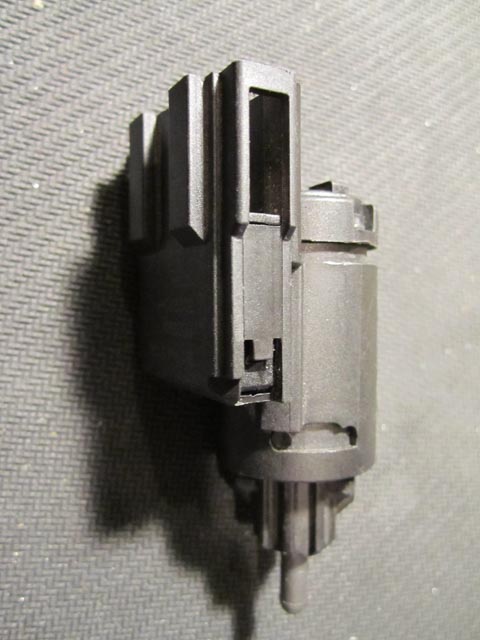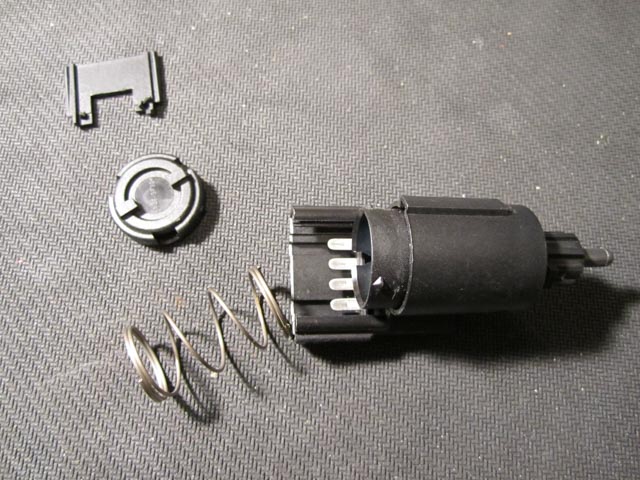I recently started having really weird e-gear issues in my Murciélago Roadster.
The first sign of problems was when I stopped in a parking lot, left it in 1st and went into a grocery store. When I came out, it refused to start, or come out of gear. I called Josh at ECS and we tried hooking it up to a Leonardo, which showed correct hydraulic pressure, but it simply refused to change gear. I ended up having to put it on a flatbed, but, because it was stuck in gear (and is all wheel drive) this was difficult. We ended up having to raise it on wheel jacks and winch it onto the flatbed.
When it got to the shop it misbehaved for a while - we added some hydraulic fluid, and bled the system, and then suddenly it started working. While doing this, Josh also adjusted the P.I.S (Point of Initial Slippage) - this made the shifts much much smoother.
A few weeks later I was just turning back into my driveway, and it started behaving oddly again - she didn't really seem to want to change gears, but grudgingly agreed to after a few pulls on the paddles... but it all felt "weird". I put it in the garage and called Josh.
He made a house call and we spent some time with the computer, exercising the E-gear actuator. It kept working properly, which was very frustrating - I didn't want to be driving the vehicle not knowing what the issue was, or when it might happen again... and then, suddenly, it all stopped. Instructing it to change gears, either through the paddles, or through the computer resulted in her simply ignoring us.
We then noticed that she had just logged a brake switch error...
When I first purchased the Murciélago I spent a bunch of time reading up on known issues. The main one that people were mentioning was the fact that the brake switch was a known weak point, and would suddenly die and leave the owner stranded. I purchased a spare brake switch, "just in case" and kept it in the trunk (this was the one and only emergency spare part I got). We tested that this was a problem by watching the brake sensor output in the computer - sometimes it would believe that the brake pedal was pushed when it wasn't, sometimes it would believe that the pedal was not pushed when it was.
Removing the old brake switch is easy - you climb into the driver's footwell, the brake switch is mounted on a bracket facing the brake lever. You remove the electrical connector, and then rotate the switch to remove it.



Replacing the switch is significantly harder, at least until you know the tricks. The problem is that the front of the switch needs to go through the keyway in the bracket, and then rotate to lock in into place. There is an interlock that prevents the switch from rotating until the plunger is pressed and held in. After removing the old switch, you might want to play with it to see how it locks, and how it turns.
Installing it is made tricky by the fact that you are lying on your back in the footwell, and need one hand to press in the brake pedal to move it out of the way. You need your other hand to press the switch in, and then your third hand to press the plunger. If you happen to not have been born with only two hands, you are kind of stuck at this point. The trick which I finally figured out was to start the engine. This provides vacuum assist, and allows you to move the pedal with your hand (or by resting your head on the pedal) and install the switch with only 2 hands
This completely fixed the issue - we tested it on the Leonardo for a while, and I've taken her out for a number of great drives, all with perfect, crisp shifts.
I ended up disassembling the old switch to see how it worked, and more importantly, how it failed.




These show the disassembled brake switch. The pedal lever presses on the pin, which makes the blue plunger slide back. This slides over some cams, opening the contacts. It seems that, over time, the plunger wears down the plastic cams on the switch, leading to the contacts not fully opening / becoming intermittent. There are two sets of contacts, it sems that one is actually for detecting when the switch is pressed, and the second is a self test / monitoring pair. This all seems way over engineered.
Replacement switches are really cheap (around $12.00USD), and, in my opinion, worth keeping one in the car, just in case it fails while you are out on the road.
They are an Audi part (3B0945511C, these superceed 3B0945511B), and are used in various cars, including Lamborghini Murciélago, Gallardo Spyders, Superleggera, Audi A4, A5, A6 and VW Golf mk5.
Ricambi America has them here and BullStuff has them here.